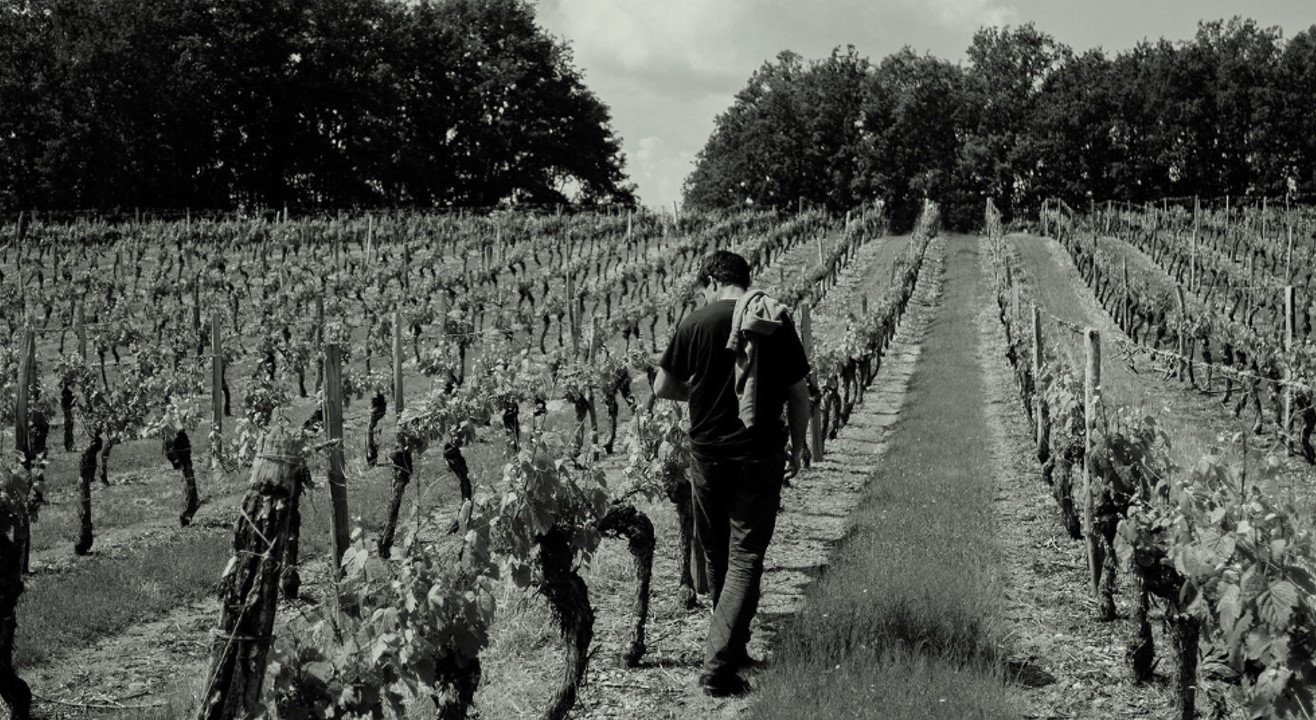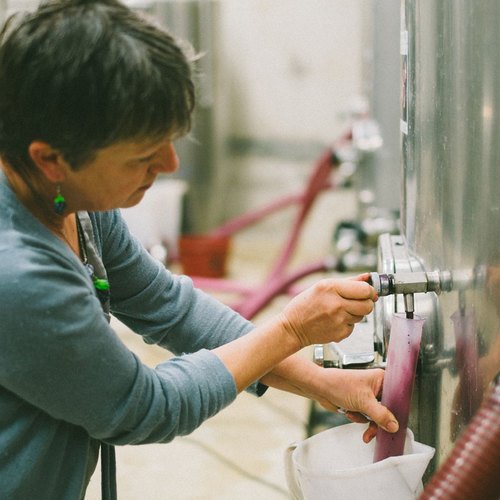
Viticulture & Winemaking
RIPE FOR THE PICKING.
The Dimani family spends considerable time in the vineyards, pruning, leaf pulling, checking the progress of ripening—and, according to Lucien, ripeness is a real virtue in Cahors. His liberal approach to hangtime makes Néné nervous at times, since inclement weather late in the growing season can potentially lead to rot. But Lucien trusts his gut, not to mention his experience—the time he spent making wine in the muggy mountains of Virginia taught him how to push the boundaries of ripeness without reaching a state of overblown opulence.
Because of the domaine’s emphasis on ripeness, the grapes are typically harvested later than those of their neighbors. The resulting wines are balanced, ripe but not overripe, with considerable freshness. While they are just as ageworthy as their earlier-picked peers, Le Bout du Lieu’s wines have an added benefit: they are much more approachable early on.
TERRACED FOR SUCCESS.
The vines of Domaine Le Bout du Lieu are grown on three main terrace tiers, all based on red clay soils. Despite this commonality, each terrace differs slightly in the composition of its stones—some with gravel, some with pebbles; some with iron oxide and magnesium, some with limestone fragments. Each tier, with its own individual strengths, requires a distinct growing strategy in order to appropriately manage yields, and each is harvested separately, at its unique optimal moment.
Moving up the slopes, Le Bout du Lieu’s terraces progressively increase in their potential for depth and concentration. The first terrace offers soft and fruity wines, the second provides complex, medium-bodied cuvées, and the third leads to rich and powerful character.
DEEP ROOTS.
All of Domaine Le Bout du Lieu’s vines are grafted by the Dimanis themselves onto rootstock through massal selection. The estate’s earliest vines were planted in 1958, following a severe frost two years prior that wiped out ninety-five percent of the vineyards in Cahors.
A BALANCED HARVEST.
The Dimanis prefer the efficiency of machines over hand harvesting, but they don’t rely exclusively on technology when it comes to sorting. Grapes are picked at night when cooler temperatures help keep the fruit fresh as it makes its way to the winery for immediate processing.
SAYING NO TO SULFUR
For three years now, Lucien has been vinifying his wines without sulfur. Instead, he uses a method called bio-protection, involving the early addition of microorganisms to the grape must before fermentation. Not only does this technique successfully combat Brettanomyces and bacteria, but it’s also remarkably simple and quick.
FROM VINEYARD TO BOTTLE.
For the first 24 hours after the harvest, the grapes undergo a cold soak, with a target temperature of 14 to 15 degrees celsius. The bio-protection yeast is added, and the Malbec is destemmed and fermented in concrete or stainless steel—without crushing, due to the variety’s naturally delicate skins. Most of Le Bout du Lieu’s wines spend around 20 days in tank, but some later-harvested single plots may linger for an additional week or two.
Pumpovers, punch-downs, and the rack and return method are all practiced—with a gentle touch—to encourage the extraction of pigment, tannin, and flavor from the grapes. After fermentation, the grapes are racked once again and the skins are pressed. The press juice is deposited into separate tanks, and after the juice has settled for a week, it is racked off the heavy lees. The free-run juice, on the other hand, ages on the lees until after malolactic fermentation is complete.
Next, the wine is transferred to barrels—Lucien, who once worked at a cooperage, has a deep understanding of the effects of various sizes, types, and toast levels of oak. He often experiments, regularly working with around five different coopers in order to source the ideal barrel for each individual cuvée. After 18 to 24 months, the Dimanis taste every barrel and determine which ones are best suited for the more youthful bottling and which are destined for another year in concrete after blending. The wines are then racked once more before, finally, they are bottled, under natural cork. Lucien typically avoids fining, and only practices minimal filtration.

